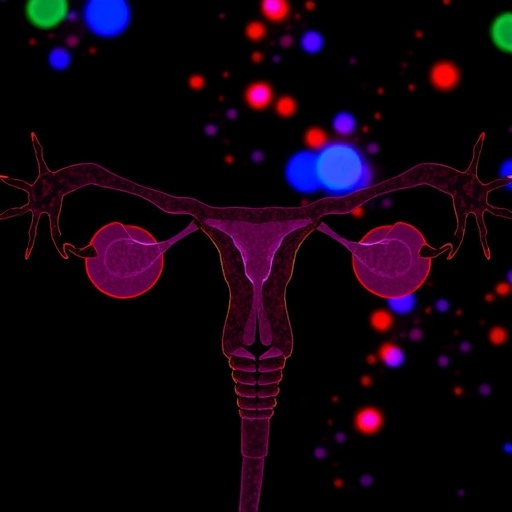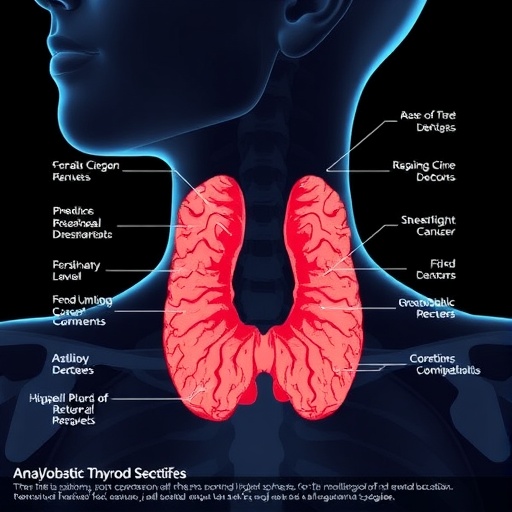In an era where ovarian cancer remains one of the most lethal gynecologic malignancies, groundbreaking research continues to unveil the intricate molecular networks driving its progression and resistance to therapy. A recent study spearheaded by Wang, M., Xu, H., Li, Q., and their colleagues has illuminated a pivotal molecular player in this landscape: STXBP6. This protein, previously underexplored in the context of ovarian cancer, has now been identified as a critical regulator of tumor growth, metastatic potential, and lipid metabolism, orchestrated through the well-documented PI3K/AKT signaling pathway.
The PI3K/AKT pathway has long been recognized as a central signaling cascade pivotal to multiple aspects of cell survival, proliferation, and metabolism. Aberrations within this axis are frequently implicated in oncogenesis and therapeutic resistance, making it a focal point of cancer biology research. STXBP6’s newly discovered role signifies a transformative step in understanding how ovarian tumors adapt and thrive in hostile microenvironments by leveraging this pathway to their advantage.
Delving deeper into the molecular interplay, STXBP6 appears to function as a regulatory node, influencing not only cellular proliferation but also the complex processes governing metastasis. The findings suggest that STXBP6 mediates metastasis by altering cytoskeletal dynamics and membrane trafficking, critical components that enable cancer cells to detach, migrate, and colonize distant organs. This adds a layer of nuance to the conventional wisdom that primarily attributes metastatic spread to genetic mutations and epithelial-mesenchymal transition.
One of the most consequential revelations of this study is the link between STXBP6 and lipid metabolism in ovarian cancer cells. Lipid metabolism has emerged as a critical element in cancer biology, as rapidly dividing tumor cells demand an increased supply of lipids for membrane biosynthesis and energy production. The researchers demonstrated that STXBP6 modulates lipid metabolic pathways, potentially reprogramming cancer cells to acquire a metabolic flexibility that fuels their aggressiveness and survival under nutrient-deprived conditions.
This metabolic reprogramming is intimately connected to the PI3K/AKT signaling axis. STXBP6’s regulation of this pathway initiates a cascade of downstream effects that alter the activity of key lipid metabolic enzymes. Such modulation ensures a continuous provision of fatty acids and lipid-derived signaling molecules, which in turn supports the energetic and structural demands of tumor expansion and dissemination.
Intriguingly, the upregulation of STXBP6 was associated with enhanced activation of AKT, a serine/threonine kinase that serves as a major effector of PI3K signaling. This hyperactivation promotes not only proliferation but also confers anti-apoptotic advantages to ovarian cancer cells, further complicating therapeutic interventions. The interplay between STXBP6 and AKT signaling thus represents a vital axis that tumor cells exploit to circumvent programmed cell death and survive environmental stresses.
Moreover, through meticulous cellular and molecular assays, the authors demonstrated that silencing or inhibiting STXBP6 expression drastically reduces ovarian cancer cell viability and invasiveness. This points to the therapeutic potential of targeting STXBP6 as a strategy to impair tumor progression. Importantly, combined inhibition of STXBP6 and components of the PI3K/AKT pathway yielded synergistic effects, underscoring a possible avenue for combination therapies.
One cannot overstate the clinical ramifications of these findings. Ovarian cancer is notorious for its late diagnosis and high recurrence rates, often due to the development of chemoresistance. By elucidating a novel molecular determinant of tumor growth and metastasis, this study lays the groundwork for precision medicine approaches that could tailor treatments to patients exhibiting elevated STXBP6 expression or dysregulated PI3K/AKT signaling.
The study also highlights the immense importance of lipid metabolic pathways as therapeutic targets. Given that metabolic plasticity is a hallmark of malignancy, constraining lipid synthesis or uptake through STXBP6 manipulation may render cancer cells more vulnerable to existing chemotherapeutics or metabolic inhibitors. This metabolic vulnerability could be exploited to design multi-pronged treatments that block tumor progression while minimizing collateral damage to normal cells.
At a mechanistic level, the researchers employed state-of-the-art transcriptomic and proteomic analyses to chart the downstream effectors modulated by STXBP6. Integration of these data sets revealed a complex signaling network that intersects with various oncogenic pathways, including mTOR, a well-known regulator of cell metabolism and growth. The crosstalk between STXBP6 and such pathways amplifies the oncogenic signal, making STXBP6 an attractive candidate for targeted therapeutic development.
Further experimentation using in vivo ovarian cancer models corroborated the in vitro findings. Tumors with elevated STXBP6 expression exhibited accelerated growth rates and higher metastatic burden, particularly in the peritoneal cavity, commonly affected in advanced ovarian cancer patients. Conversely, model systems where STXBP6 was genetically knocked out or pharmacologically inhibited demonstrated significantly reduced tumor mass and dissemination, affirming the protein’s oncogenic role.
The implications of this research extend beyond ovarian cancer. Given the ubiquity of the PI3K/AKT pathway in various solid tumors, understanding how STXBP6 modulates this axis may reveal a broader spectrum of malignancies where STXBP6 functions as a key regulator. This could pave the way for broad-spectrum anticancer treatments addressing common molecular vulnerabilities.
Importantly, the study includes comprehensive analyses of patient-derived tumor samples, linking STXBP6 expression levels with clinical outcomes. Patients manifesting high STXBP6 expression tended to have poorer prognoses and increased likelihood of metastatic disease, supporting its potential as a prognostic biomarker. Such biomarkers could revolutionize patient stratification and inform treatment decisions, optimizing outcomes.
In light of these advancements, the next logical steps involve developing specific inhibitors or monoclonal antibodies targeting STXBP6. The design of such agents will require deeper structural and functional studies to decipher active sites and binding partners critical for its function. Moreover, safety and efficacy studies in preclinical models will be paramount to translate these discoveries into clinical practice.
While the field grapples with the complexity of ovarian cancer heterogeneity, uncovering unifying molecular drivers like STXBP6 brings optimism. This study’s integration of signaling, metabolism, and metastasis highlights the multifaceted role of a single protein in one of the deadliest cancers. The convergence of molecular biology, pharmacology, and clinical oncology promises a future where interventions can be more effective and personalized.
As research accelerates, it becomes evident that the intersection of metabolic pathways and oncogenic signaling is fertile ground for discoveries. STXBP6’s role exemplifies this paradigm and beckons a deeper exploration into metabolic regulators as cancer therapeutic targets. Bridging fundamental science and translational medicine, the insights gleaned from this work could redefine how ovarian cancer is treated in the coming years.
Ultimately, this landmark study not only unveils a new biological actor in the theater of ovarian cancer progression but also lights a fire under the global quest for improved therapies. It serves as a clarion call for the scientific community to embrace integrated approaches that dissect cancer’s molecular complexity and innovate strategies that halt it in its tracks.
Subject of Research:
Article Title:
Article References:
Wang, M., Xu, H., Li, Q. et al. STXBP6 regulates growth, metastasis and lipid metabolism of ovarian cancer cells via the PI3K/AKT signaling pathway. Med Oncol 42, 531 (2025). https://doi.org/10.1007/s12032-025-03082-9
Image Credits: AI Generated
DOI: 10.1007/s12032-025-03082-9
Keywords: STXBP6, ovarian cancer, PI3K/AKT signaling pathway, lipid metabolism, tumor growth, metastasis, molecular oncology
Tags: cancer cell proliferation dynamicsgynecologic malignancies researchlipid metabolism in cancermolecular networks in oncologyovarian cancer metastasis mechanismsovarian tumor microenvironment adaptationPI3K/Akt signaling pathwaysignaling cascade in cancer biologySTXBP6 as a regulatory nodeSTXBP6 ovarian cancer researchtherapeutic resistance in ovarian cancertumor growth regulation STXBP6





